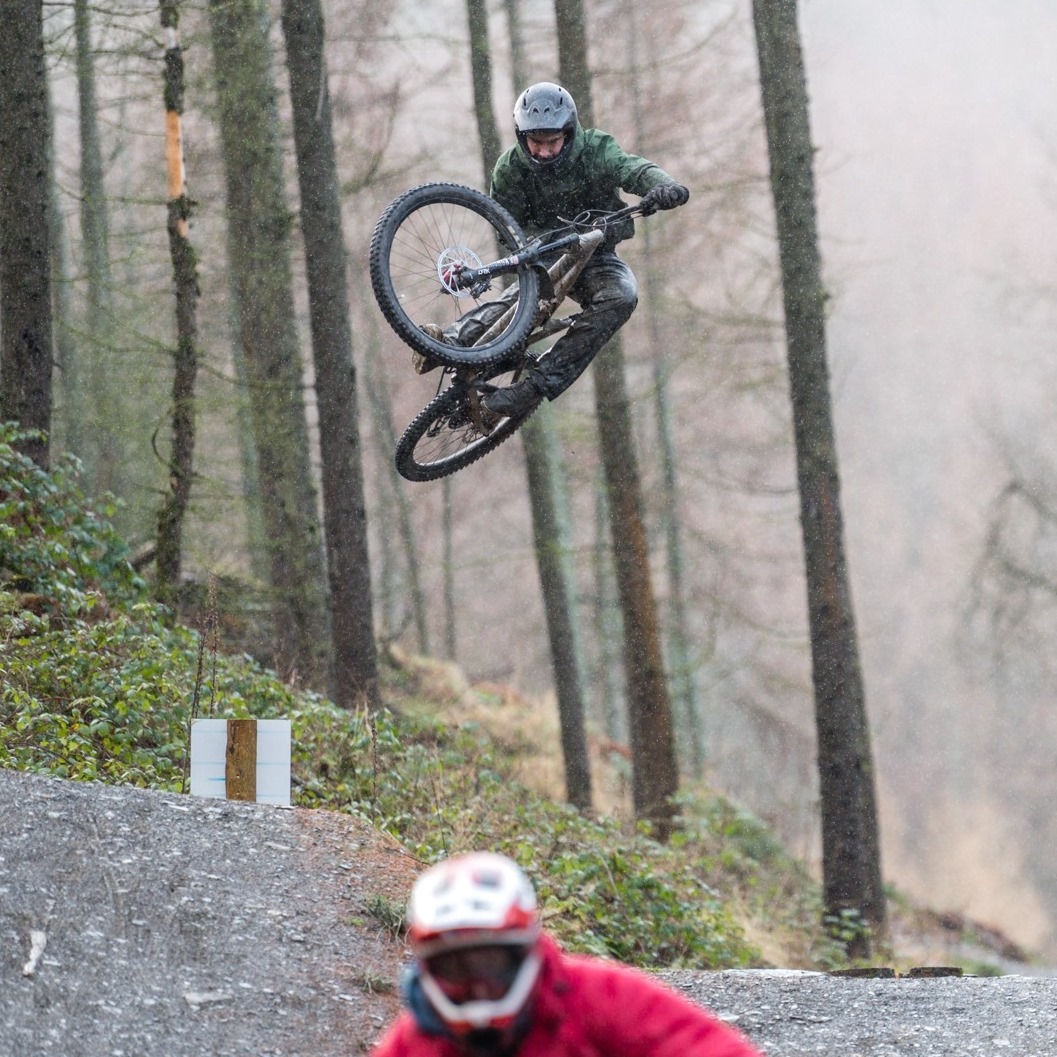How To Inflate a Mountain Bike Tire with Presta Valve?
/ Beginners / How To Inflate a Mountain Bike Tire with Presta Valve?
You might think inflating a mountain bike tire is not such a big deal. That is, only until you have a look at your bike tire valve. What is that intimidating thing about a valve?
Presta valves are longer and are common on most new bikes these days. The cylindrical piece of metal has a small tip right at the end. Inflating your tire with a Presta valve might not be different from that older Schrader valve, which is smaller and thicker.
But you need to have a compatible pump for your Presta valve. In this guide, we will explain how to inflate a mountain bike tire with a Presta valve. Because you cannot use those regular car tire pumps with it, so scroll down to read further.
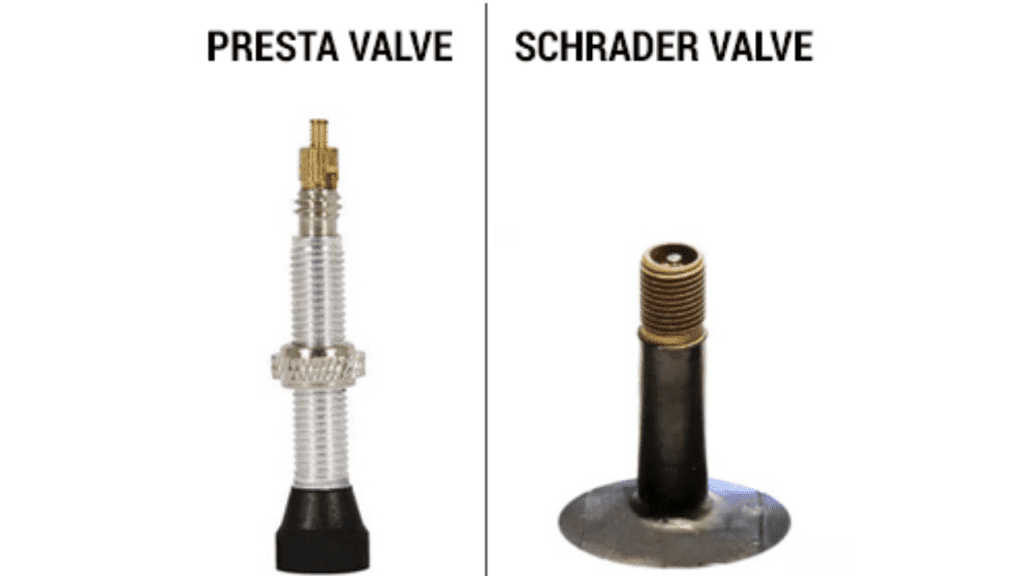
What Are Presta Valves?
The older bike tires came with Schrader valves that were thicker and smaller than Presta valves. Using a car tire pump, you can pump air into your bike tire because car tires also come with similar Schrader valves. But this is not the case with Presta valves.
Schrader valves have a pencil diameter, and there is a small button right in the center. When you press, this button air flows in or out. This button is there to hold the air pressure steady.
On the other hand, Presta valves are much skinnier. They also do not have a button in the center like Schrader valves. Instead, they come with a screw mechanism right at their tip. When this screw is closed, it holds the air pressure in the tire. As soon as you unscrew it, you can pump air in or out.
At the moment, these Presta valves are more common on more modern and high-end mountain bikes. High-performance cyclists and racers prefer using them, and they are becoming a more familiar scene. Some low-end MTBs also feature these Presta valves.
Benefits of the Presta valve
You might be thinking, why go for Presta valves that are not very common and are mostly found on high-end bikes? Are they making you pay more for it?
Well, no, these Presta valves are not here to make you agonizingly furious. These valves are far more reliable than Schrader valves. You can inflate your tires with the proper air pressure.
Due to their design, the Schrader valve loses air over time. Therefore, you have to top off the air occasionally. But if you have a cap on your Schrader valve, it will significantly reduce these air losses. But you still do not have the accurate pressure as the cap does not entirely solve the air loss problem with Schrader valves.
If you are a casual MTB rider, you might not know the exact air pressure you should have while riding. But if you are a high-speed rider, tire pressure can significantly impact speed and performance. It also contributes to your riding safety.
That screw present on the tip of a Presta valve enables the rider to close the tube off precisely at the desired pressure. You do not have to take the pressure off. Apart from any puncture or unnoticed leak, you can conveniently ride your bike with proper tire pressure.
How Do You Inflate a Tire with a Presta Valve?
Worried about inflating your Presta valve tire at a gas station? Well, do not worry, as you can inflate your Presta valve tie using a standard air pump or a portable air compressor. Nevertheless, you will need an adaptor that is ridiculously small in size, which is a Presta valve adaptor like this one from Bike Bits.
So, how to inflate the Presta valve? Here are some steps that you need to follow for inflating a Presta valve using a standard pump,
- Unscrew that screw present on the tip of your Presta valve.
- Place your valve adapter on the tip of your Presta valve.
- Engage your pump and start inflating your MTB tire to your required pressure.
- Remove that adapter and screw your Presta valve back close.
As more and more MTB tires come with Presta valves, most bike pumps feature a universal hole or two separate holes for each type of valve. So how to fill a Presta valve might not be that much of an issue anymore.
Nevertheless, you must always carry your valve adaptor with you to prevent any inconveniences. Some riders even leave their valve adapter screwed on the valve all the time. You will only have to make sure that your valve is screwed closed before putting your adapter on this way.
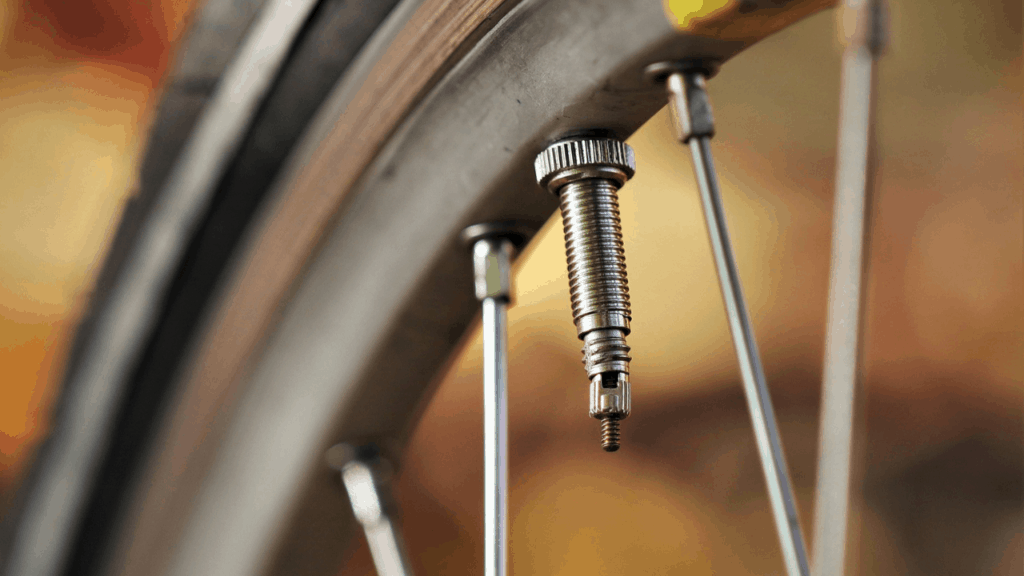
Where to get a Presta valve adaptor?
These adapters are pretty tiny and portable. It means you can quickly lose them. But the good thing is that these adapters will not cost you a fortune either. You can buy a handful at a time.
Keep one adapter in your tool kit, another in your garage, and one on your tire valve. Keeping one in your glove box is a good option too. You can find these Presta valves in all bike shops and sporting goods shops. These valves are available for you to buy online, too.
Can You Inflate a Presta Valve Without An Adaptor?
What if you do not have an adapter or a universal pump at your disposal? Well, you can modify a tube cap to create a functioning adapter with your Presta valve cap. Here are the steps that you need to follow,
- You can remove your veil cap and find a place on it where it tends to get smaller.
- Cut at that spot using a pair of scissors or anything else that can cut. Throw that tiny tip away.
- Now, unscrew that valve on your tire.
- Turn over the modified valve cap, place it on the tire valve, and screw it down a few twists.
- Now, you can attach the pump and start inflating your tire.
- Make sure to screw that valve shut once you are done inflating your tire.
Do Presta Valves Need a Special Pump?
As we have mentioned earlier, the two most common types of tire valves are Schrader and Presta valves. Schrader valves are found on bikes that have wider rims. Schraders are commonly found in automobiles too.
They have an internal spring that allows air inflation and keeps the valve closed when pumping air in them. You can use a regular pump to inflate this type of tire valve.
Presta valves are much narrower and are commonly found on bikes that have narrower rims. These bikes are primarily high-end models. The construction of these valves makes them trickier to inflate as they have a manual lock nut for opening the valve to inflate air.
You can either go for a standard pump with a Presta adaptor or a universal pump like the Topeak Joe Blow Bike Floor Pump (below) or ASYXL Mini Bike Foot Pump that you can use to inflate Schrader or Presta tires.
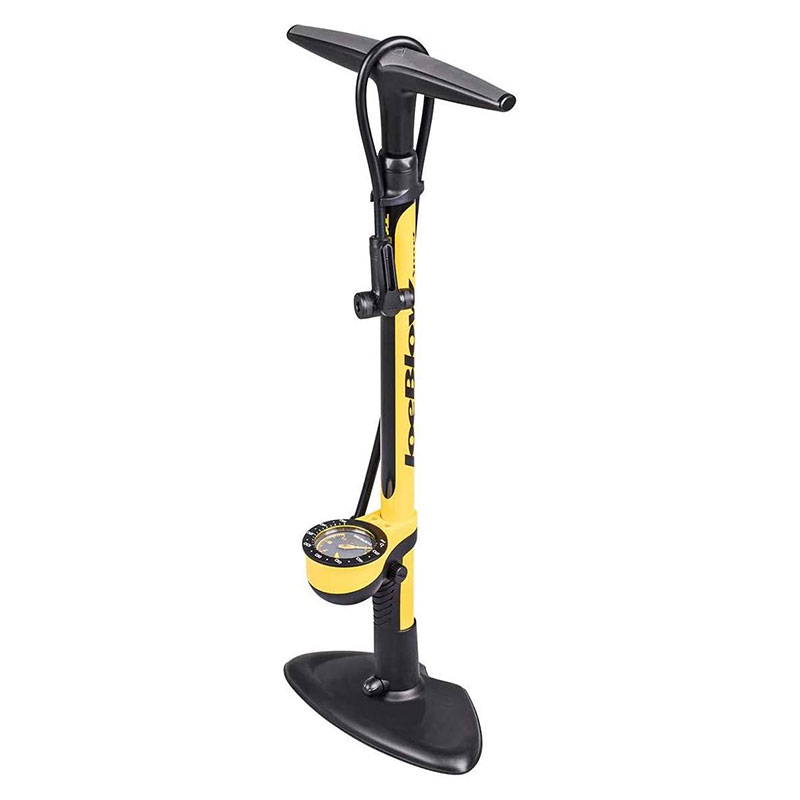
Topeak Joe Blow Floor Pump
| Price: | $44.95* Price correct at time of publishing. Check latest price. |
| Perfect for: | Anyone with a bike |
| Categories: | Essentials |
| Our Rating: |
Our Verdict: Whatever type of bike you have and whatever valve your tires use - the Topeak Joe Blow is an essential.
View On Amazon (paid link)You can also find Presta pumps that come with gauges on them, like the one by Vibrelli above. The gauge is there to provide you with a reading when you are inflating your tire. This way, you can inflate your tire with precision. Moreover, you do not have to top off the air pressure like you usually do with a Schrader valve.
What Purpose Does the Presta Valve Nut Serve?
When you break up your Presta valve, you will notice that it has a nut to screw down. It is called a jam or installation nut, and it is there to prevent the valve from dipping into your wheel as you are pumping air in your tire.
Once you have the correct air pressure to stop it from sinking under, the nut has done its job, and you can remove it.
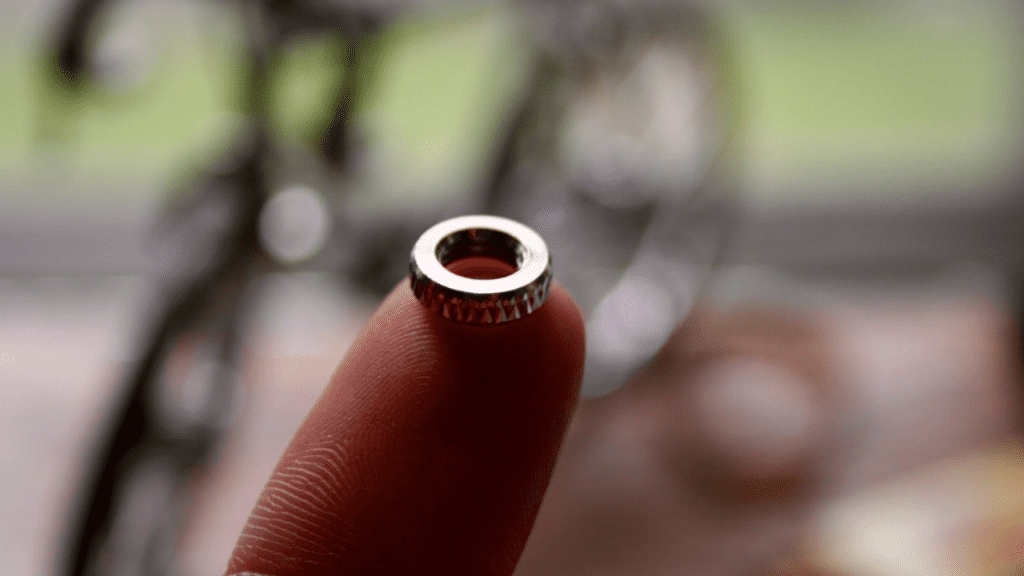
But what if you leave it there? Here are some good reasons why you should remove this jam nut once you have pumped air into your tire.
- It will keep on rattling during your ride and will cause unwanted, disturbing noise.
- This jam nut can rust and fuse to that valve stem. As a result, a simple tire change will become a Herculean effort.
- No matter how small it is, it does add weight to our tire.
- It will be just another metal thing you will have to tackle during cold weather by taking your gloves off and dealing with a flat.
- If you have screwed it down too tight, it will start squeezing the rubber tube right against the rim hole edge. With many inflation and deflation jobs, the regular wiggles or movements during the ride will cause a cut.
However, with that being said, there are a couple of good reasons why you should keep this nut on the valve,
- It is shiny and looks pretty cool.
- If you habit of letting your MTB tires go full flat, the nut will make reinflation a much easier job.
A more common belief is that this jam nut can keep the valve from rattling during a ride. But it can only prove worthwhile if it stays in its place against the rim.
However, if you frequently have problems with your valve shaking around, do what the pros do. Stack up a few layers of electrical tape and put a hole right in the middle. And put the stacked tape layers over the valve, as shown in the picture below.
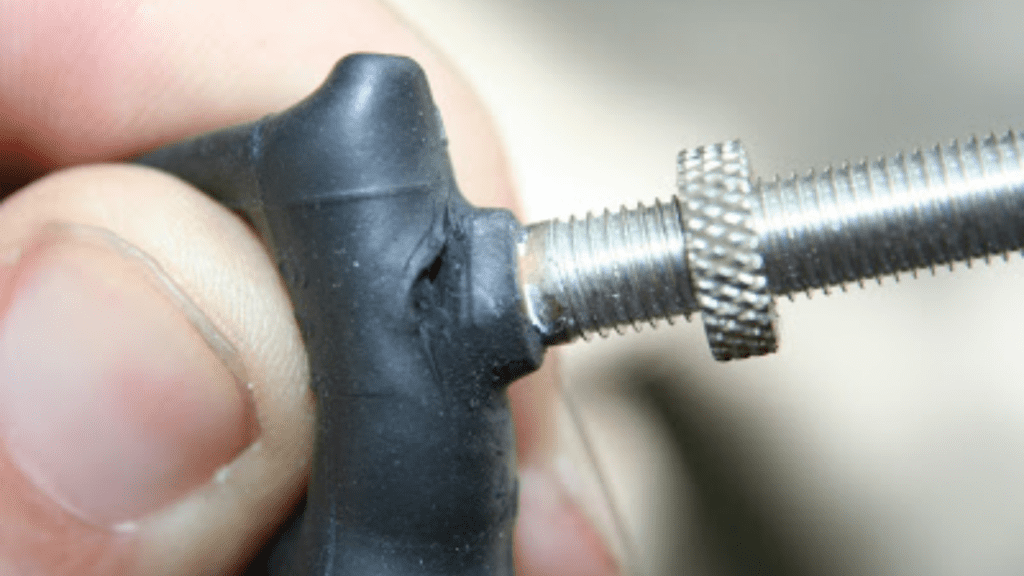
FAQs
How can I inflate a Presta valve with a Schrader pump?
While most of these bike pumps are compatible with Presta valves, some are not. If you have a Schrader pump, you can still inflate a Presta valve with an adapter, and you are good to go. These adapters are pretty easy to install, and you only have to screw them onto your Presta valve.
How can I check the pressure of my MTB tire?
The quickest and easiest way to check the tire pressure is by using your hand. Just squeeze the tire with your fingers. The tire should be hard right in the center and a tiny give farther near the treads. But judging the right pressure is mandatory here, and it will only come with experience.
If you want to be more precise with your tire pressure checking, you should invest in a tire gauge. However, you need to be careful with these gauges as they can be unreliable at times, and their sensitive sensors might break if you do not handle them with care. Another easy method is with the floor pumps we mentioned above that have a gauge give you the tires pressure.
What is the ideal tire pressure in a mountain bike tire?
It might be a pretty simple question, but there is no straightforward answer to it. The best practice is to refer to the specs mentioned in your bike’s manual. Or you can refer to the specs printed on the sidewall of your bike tires.
Most expert riders recommend 30 PSI on the front tire and 33 PSI on the back tire. But, this information will only serve you well if you are looking to ride your bike casually. It is an ideal bike pressure for rolling those intermediate trials twice or thrice a month.
But if you are looking to spend a significant amount of time on your bike and have been dealing with punctures and blowouts, it is better to go for the tires suitable for the trials you will mostly ride and go with the recommended pressure for them.
Conclusion
Presta valves are a much better option than those conventional Schrader valves. If you are looking to inflate your tires with more accuracy, go with Presta valves. You can go for a universal pump to inflate your Presta valves using a standard pump with a Presta adapter.
Presta valves are becoming more common these days, with some low-end bikes having these valves too. So it is better to have a Presta adaptor because you cannot use your regular car tire pump with these Presta valves to inflate your tires.
Related Articles
What Are Mountain Bike Rock Gardens?
Oli L • September 5, 2022
So you're getting into mountain biking and not sure what mountain bike rock gardens are. Riding rock gardens on a mountain bike is a skill to learn when you first start riding. You might have thought that most trails will be smooth and easy to navigate through but remember that each trail is different. Preparing for these obstacles will help you become a better mountain biker. Rock gardens can come...
The Full Suspension Vs. Hardtail Debate Continues
Oli L • August 28, 2022
The full suspension vs. hardtail debate continues as we look at the pros and cons of each type of bike. Both full suspension and hardtail mountain bikes are great options if you want to start mountain biking. But what do you really need to know about each type before buying one? Mountain biking has exploded in popularity in recent years. The sport involves riding through singletracks mostly in beautiful mother...
6 Mountain Bike Maintenance Tips For Beginners
Oli L • August 8, 2022
There are many different types of mountain bikes out there. But, they all have one thing in common – ongoing maintenance. Mountain bike maintenance can be tricky if you don’t know what you’re doing, you could end up damaging your bike or even yourself. Mountain bikes require proper maintenance to keep everything running smoothly. In this article, we'll show you what to do when things go wrong as a beginner...
8 Steps To Becoming A Better Mountain Biker
Oli L • June 13, 2022
Mountain biking is an activity that requires skill, strength, endurance, and balance. It’s also a great way to stay fit and enjoy the outdoors. But before you hit the trails, there are a few things you need to know to become a better mountain biker. The activity requires both strength and skill. It’s also a sport that has become increasingly popular in recent years. To improve your riding skills, you...
5 Mountain Bike Racing Tips for Beginners
Oli L • June 10, 2022
Mountain bikes are becoming increasingly popular in recent years. They offer an exciting way to explore the outdoors. It also offers many physical and mental health benefits on top of the friendly competition that many enjoy. We're going to go over 5 mountain bike racing tips for beginners to help you get going. MTB racing is an exciting sport that combines speed, agility, and strength in a way that few...
Latest Articles
Popular Articles
Product Of The Week
Monday 22nd April
